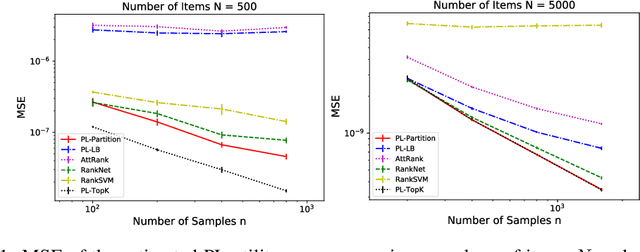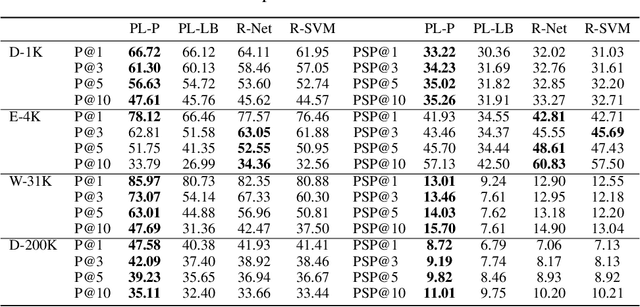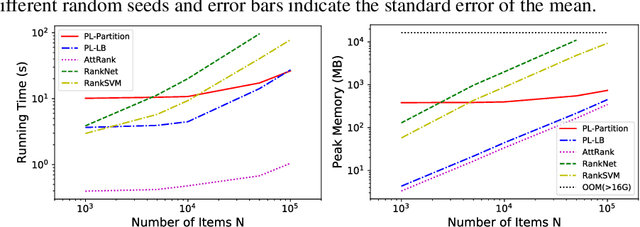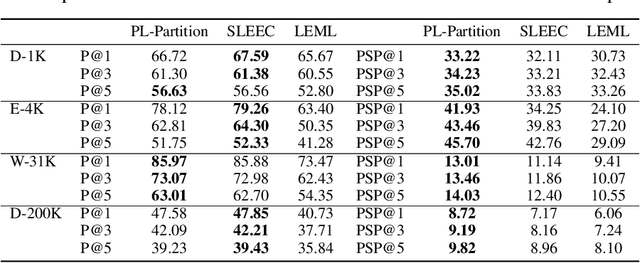Learning-to-Rank with Partitioned Preference: Fast Estimation for the Plackett-Luce Model
Paper and Code
Jun 09, 2020



We consider the problem of listwise learning-to-rank (LTR) on data with \textit{partitioned preference}, where a set of items are sliced into ordered and disjoint partitions, but the ranking of items within a partition is unknown. The Plackett-Luce (PL) model has been widely used in listwise LTR methods. However, given $N$ items with $M$ partitions, calculating the likelihood of data with partitioned preference under the PL model has a time complexity of $O(N+S!)$, where $S$ is the maximum size of the top $M-1$ partitions. This computational challenge restrains existing PL-based listwise LTR methods to only a special case of partitioned preference, \textit{top-$K$ ranking}, where the exact order of the top $K$ items is known. In this paper, we exploit a random utility model formulation of the PL model and propose an efficient approach through numerical integration for calculating the likelihood. This numerical approach reduces the aforementioned time complexity to $O(N+MS)$, which allows training deep-neural-network-based ranking models with a large output space. We demonstrate that the proposed method outperforms well-known LTR baselines and remains scalable through both simulation experiments and applications to real-world eXtreme Multi-Label (XML) classification tasks. The proposed method also achieves state-of-the-art performance on XML datasets with relatively large numbers of labels per sample.
 Add to Chrome
Add to Chrome Add to Firefox
Add to Firefox Add to Edge
Add to Edge